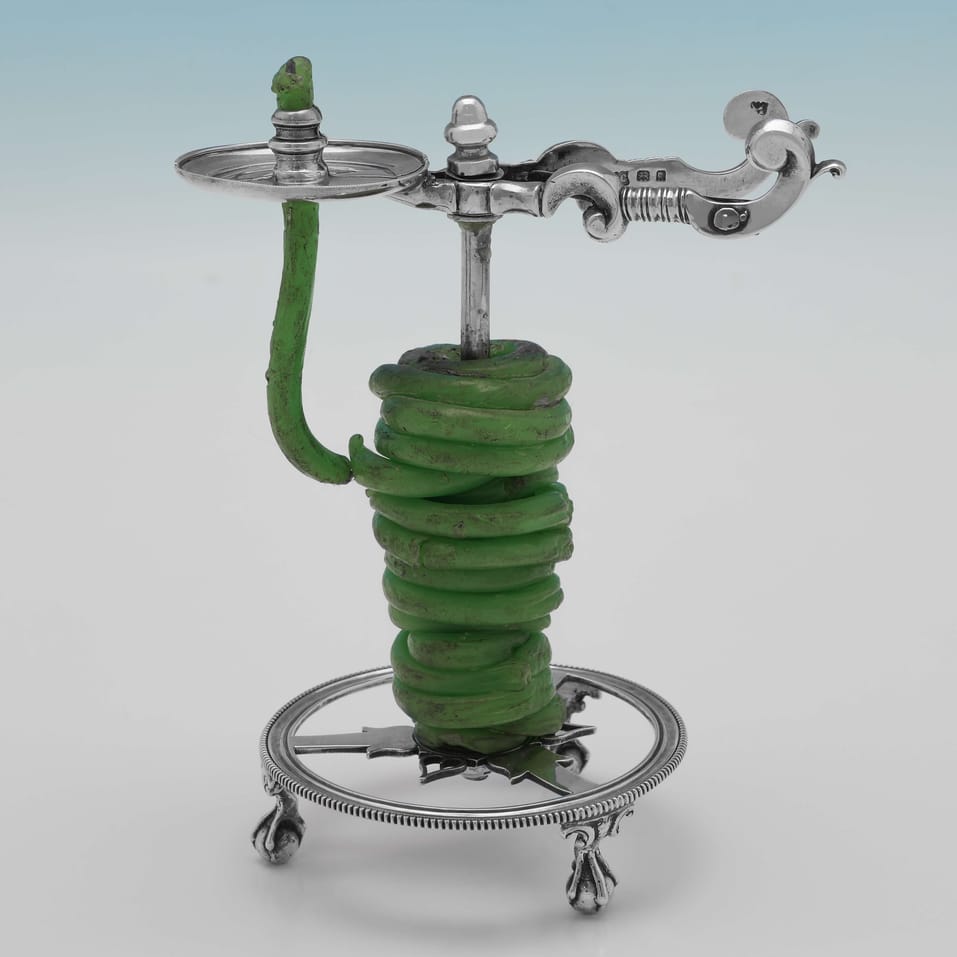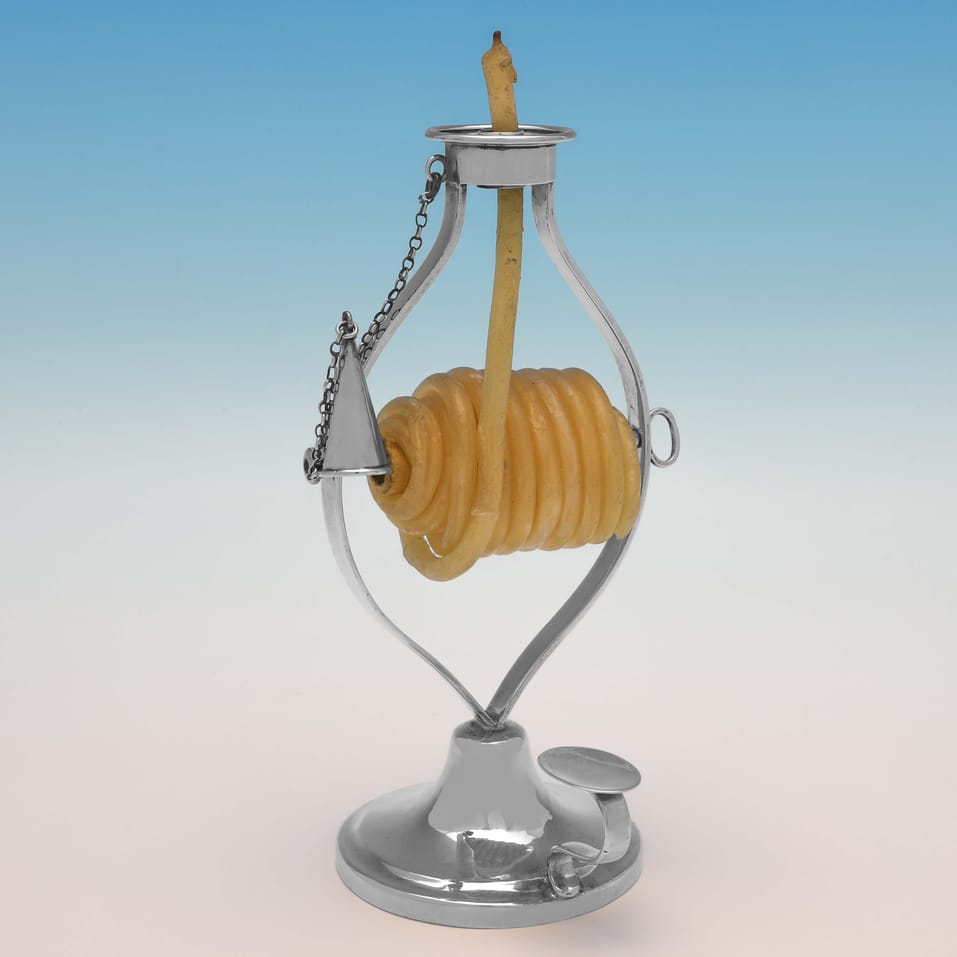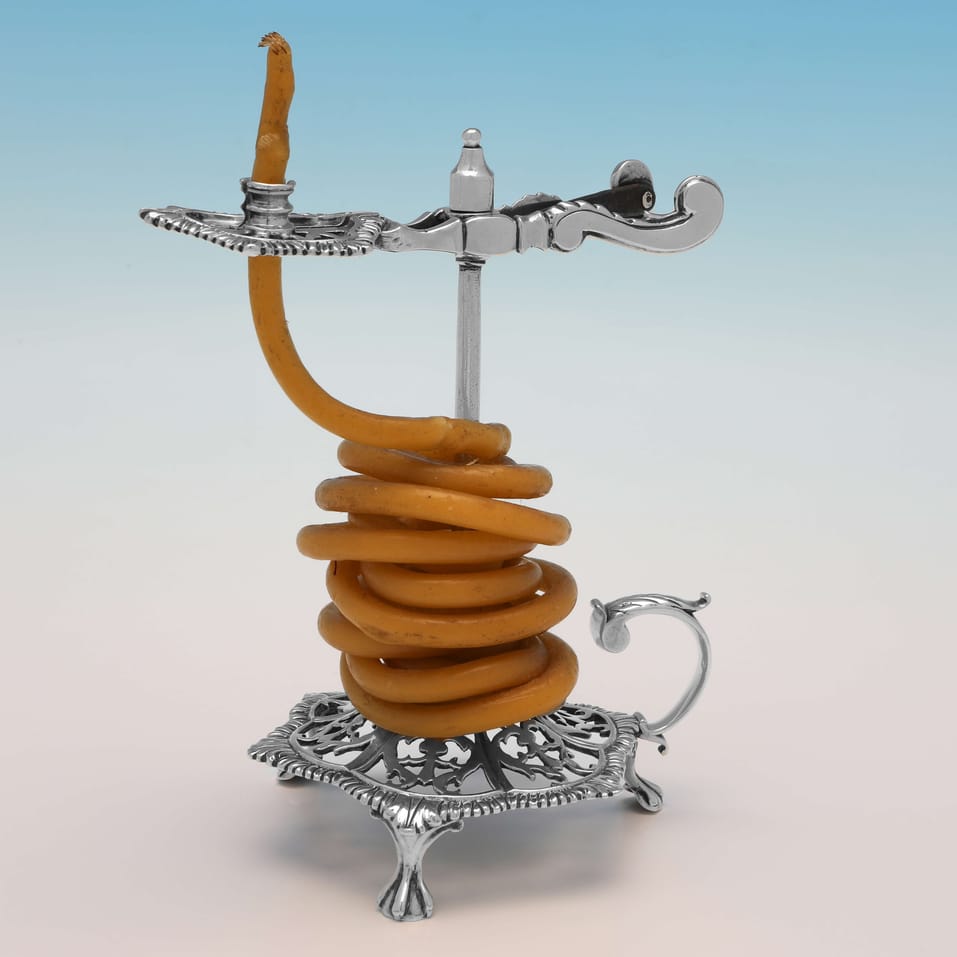Antique Silver Wax Jacks
First introduced in the UK around 1700, wax jacks were created to replace the use of a simple ball of beeswax taper for sealing letters, and would have originally been considered quite a luxurious desk accessory. The shape and design allowed the taper to be held in place by a pincer, and when lit the formation and amount of wax produced could be easily controlled. As they were made in reasonably small numbers, they are today highly collectible, with older examples being sought after by collectors from all over the World.
3 results
j7348 : Sterling Silver Wax Jack
Hallmarked In 1929
Hallmarked in London in 1929 by Richard Comyns, this handsome, Sterling Silver Wax Jack, is a faithful reproduction of a George III example. The wax jack measures 5.5"(14cm) tall, by 4.75"(12cm) wide.
£1,875
L4919 : Sterling Silver Wax Jack
Hallmarked In 1801
Hallmarked in Edinburgh in 1801 by McHattie & Fenwick, this handsome, George III, Antique Sterling Silver Wax Jack, is plain in style, with reed detailing. The wax jack measures 7.25"(18.5cm) tall, by 4.5"(11.5cm) wide.
£3,395
L5371 : Sterling Silver Wax Jack
Hallmarked In 1767
Hallmarked in London in 1767 by John Langford II & John Sebille, this elegant, Antique Sterling Silver Wax Jack, is in the Rococo taste, standing on three feet, and featuring a cast base and wax holder. The wax jack measures 6"(15cm) tall, by 5"(12.5cm) wide, by 3.25"(8cm) deep.
£3,975


